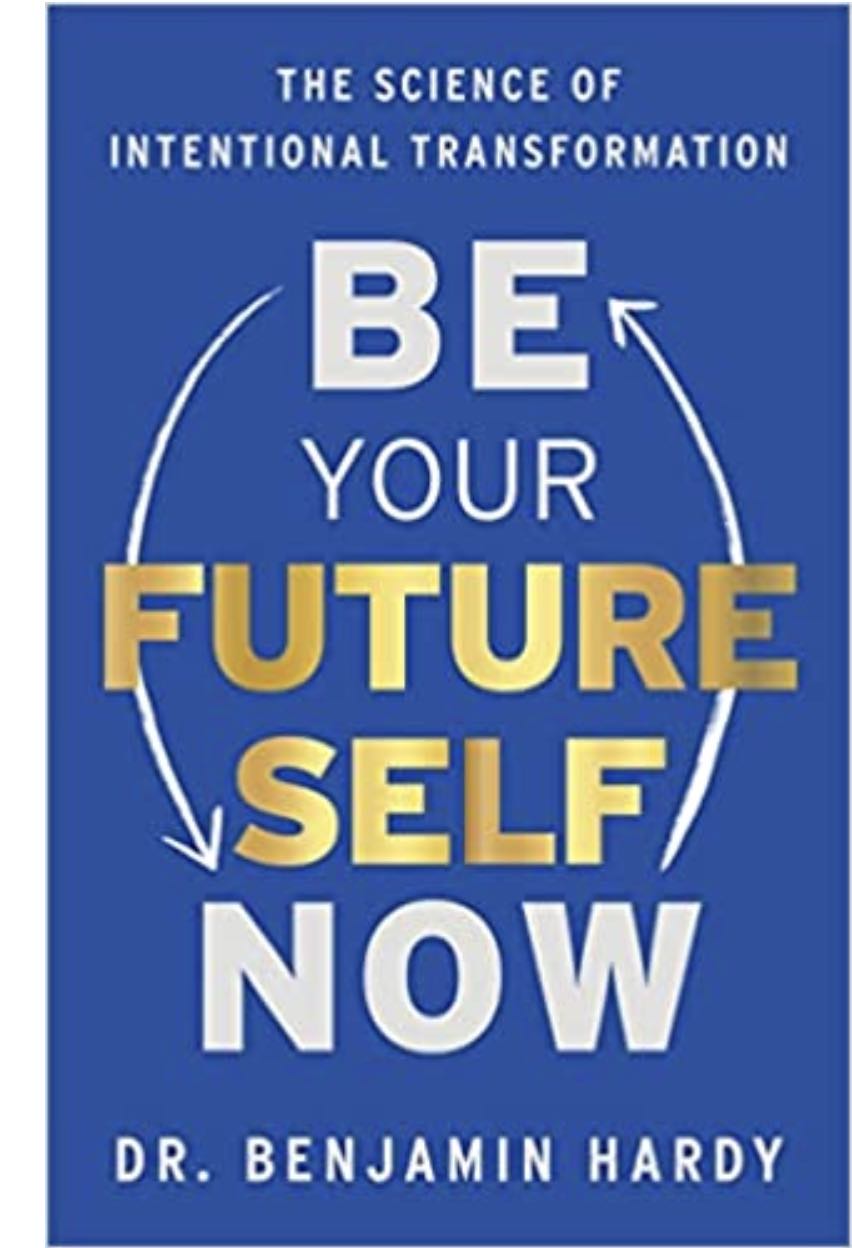Be Your Future Self Now
29 Aug 2023
If you’re remarkable, it’s likely that some people won’t like you. That’s part of the definition of remarkable. Nobody gets unanimous praise—ever. Criticism comes to those who stand out.
-Seth Godin
1990s and the Future Self
In the 1990s, a group of psychologists set out to challenge the prevailing dogma of their colleagues. These psychologists wanted to know, through their own research, what makes a person happy, healthy, and successful.
The prevailing dogma held that that human happiness was the product of past experiences. Certain levels of past trauma could not be overcome, they believed.
But the 1990s researchers discovered that human behaviors are not driven by our past experiences. Rather, we are pulled forward by our vision of the future.
Psych Research + Actionable Steps
The book Be Your Future Self Now tells how we might leverage our vision of our future self to achieve bigger goals within a faster timeframe.
The book’s author, Dr. Benjamin Hardy, is an organizational psychologist and an expert on the application of Future Self science. Regular readers of this blog will recognize his name. Hardy co-authored (with Dan Sullivan) three books that focus on business excellence: Who Not How, 10x is Easier than 2x, and The Gap and the Gain.
Pulled Forward By Our future?
What does it mean to be pulled forward by our future?
Everything we do is driven by the future we envision for ourselves. When we can clearly see abundance in our future, we will take actions that produce abundance.
However, if our vision of the future is clouded, we are less likely to take productive actions. Even worse, visions of a dismal future can cause us to engage in self-sabotage.
Fortunately, humans can choose the future vision that we want for ourselves. We can choose a future of abundance by connecting with our high-achieving future self. Hardy’s book tells how.
Yeah, Right. Prove It.
The best way to test this theory is to try it yourself. This blog post will start you along that path. For a more complete prescription, read Be Your Future Self Now.
From the book: Seven steps for becoming your future self are outlined below.
1. Clarify Your Contextual Purpose
Decide exactly what you want to accomplish. Set three core priorities and set a specific, measurable target for each priority. Clarity is energizing.
2. Eliminate Lesser Goals
In other words, un-commit to lesser goals. This step reminds me of points made in one of Hardy’s previous books, 10x is Easier than 2x. We achieve more when we focus only on those tasks that move us closer to the core priorities outlined in step one. Everything else should be ignored or delegated to someone else, an idea from Who Not How.
3. Elevate from Needing to Wanting to Knowing
Accept the truth of your Future Self and know that it is already yours. Once you eliminate lesser goals, know that you are on the path to achieving your vision.
4. Ask for Exactly What You Want
When enrolling others via the Who Not How strategy, ask for exactly what you want. Many people will tell you “no” at first. However, over time, more people will give you what you want because their desires will align with yours. Through practice you will become more adept at choosing the ideal people to ask and you will learn to state your requests with greater clarity.
5. Automate and Systemize Your Future Self
Once something works, find software to automate as much as possible.
Example: Many years ago, I ran a user group for software developers in Chicago. My team and I assumed leadership of a 78-member group. By the time I handed the baton to the next leader, we had grown the group to over 4,000 members. Our growth was accelerated through automation. You can achieve this, too.
6. Schedule Time Around Your Future Self
One way to determine what you’re committed to: Look at how you spend your time. Therefore, be sure to schedule your time around the three core priorities in step one.
7. Aggressively Complete Imperfect Work
You’ve heard this saying before: Done is better than perfect. It is better to finish a task than to procrastinate when we can’t see a path to perfection. Don’t fall into that trap, especially if you’re producing a product for fellow humans.
This trap reminds me of an observation offered by Amy Hoy, a user experience designer, product creator, and entrepreneur:
If you can help your customer kill a serious pain, they won’t care if the supporting details aren’t perfect.
~Amy Hoy
It’s better to put a product in front of customers in rapid fashion. That’s the only way to gather useful feedback, the kind of feedback that can lead to massively successful products in the long run.
Conclusion
This post can serve as a quick reference for those who have already read Be Your Future Self Now, or as encouragement for those who are planning to read the book in the future. My recommendation: Read it. It’s well worth the investment of time.




